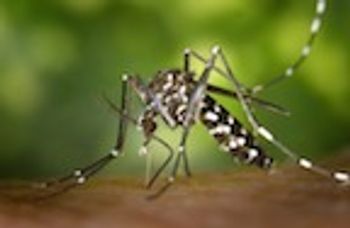
From 2013 to 2016, the incidence of positive heartworm tests increased, particularly in the southeastern United States, underscoring the need to protect dogs from Dirofilaria immitis infection.
Dr. Pendergrass received her DVM degree from the Virginia-Maryland College of Veterinary Medicine. Following veterinary school, she completed a postdoctoral fellowship at Emory Universitys Yerkes National Primate Research Center. Dr. Pendergrass is the founder and owner ofJPen Communications, a medical communications company.

From 2013 to 2016, the incidence of positive heartworm tests increased, particularly in the southeastern United States, underscoring the need to protect dogs from Dirofilaria immitis infection.

Many experts believe that the dental health of dogs in commercial breeding facilities is poor, but researchers at Purdue University discovered some surprising facts.

Antimicrobial resistance poses a serious public health threat, underscoring the need for innovative and alternative methods to curb this growing resistance.

The general benefits of pet ownership, including reduced stress and improved quality of life, are well known. What is less well known is how pet ownership benefits people with mental illness.

Results of a new study show that male Dermacentor reticulatus ticks can infect dogs with Babesia canis much more quickly than previously thought.

An alternative method of vaccine development shows promise for controlling flea infestations in domestic cats.

Although much remains unknown about feline dermatology, one thing is certain: Many skin conditions are related to internal disease.

In Japan, the emotions pet owners attribute to their pets are closely associated with the owners’ level of attachment.

A new equine parvovirus found within equine tetanus antitoxin was associated with serum acute hepatitis, raising concerns abouse the use of equine biological products.

Researchers have determined that mothers and fathers adjust their infant- and dog-directed speech according to social context and parental gender.

Aedes aegypti mosquitoes can transmit Zika virus during mating, potentially contributing to its maintenance and spread in nature.

The presence of the Asian fish tapeworm Schyzocotyle acheilognathi in live baitfish could spell trouble for Michigan’s baitfish industry.

What is at play—and what is the outcome—when dogs with Cushing disease develop concurrent diabetes mellitus?

Thermotherapy and mechanical pressure techniques—with or without pharmacologic aids—can reduce pain in emergency and intensive care unit patients.

The presence of endocannabinoids in canine arthritic knee joints opens the door for new approaches to treating this painful condition.

Cyclic voltammetry, an electrochemical technique, can measure oxidative stress and predict survival in dogs with GDV.

A 3-month outbreak of feline influenza A affected hundreds of shelter cats and a veterinarian in New York City, posing a public health risk.

Dogs undergoing limb amputations can experience post-amputation pain and behavioral changes associated with a phantom complex.

The exact cause of Alopecia X in Pomeranians remains unknown, but a recent study provided some important genetic clues.

A research team has developed a planning tool to help countries meet the World Health Organization’s goal of eliminating dog-mediated rabies by 2030.

Measuring titers of anti-feline coronavirus antibodies in cerebrospinal fluid could be a useful diagnostic method for feline infectious peritonitis.

A 2015 outbreak of H3N2 canine influenza A virus highlights the need for effective outbreak control measures and increased monitoring of viral spread.

A unique study approach proves that pets can also be victims, highlighting the need for policy changes to protect both humans and animals.

Video analysis reveals that veterinarians have much to learn about how best to communicate with clients when it comes to this sensitive topic.

An antifibrinolytic agent provides another therapeutic option for inducing emesis in dogs following accidental ingestion of a foreign substance.

Treating significant hypoalbuminemia (albumin < 2.0 mg/dL) in dogs requires careful consideration of each available albumin product.

Cats eating raw pet foods can shed bacteria responsible for antimicrobial resistance, posing a public health risk.

A novel analytical approach has identified genes and neural mechanisms associated with obsessive-compulsive disorder.

Researchers have identified an association between canine gallstones and elevated serum leptin levels and hyperlipidemia, providing new insight into canine gallstone pathophysiology.

Dogs don’t just use their facial expressions to display emotion. They also use them to communicate, a recent study suggests.